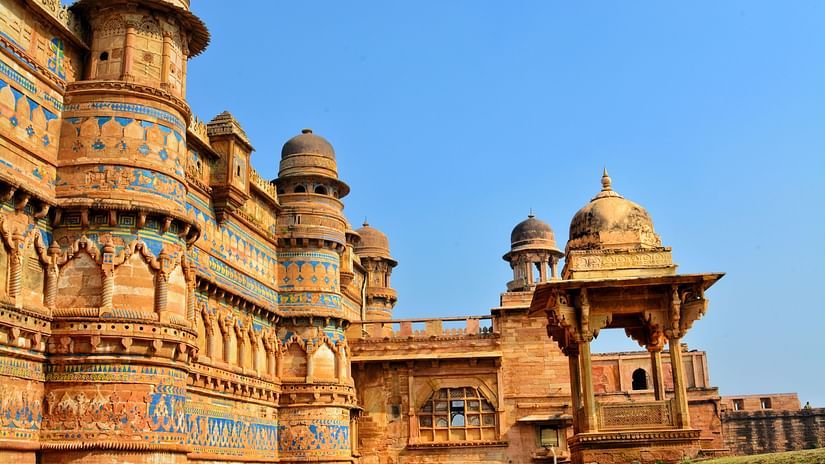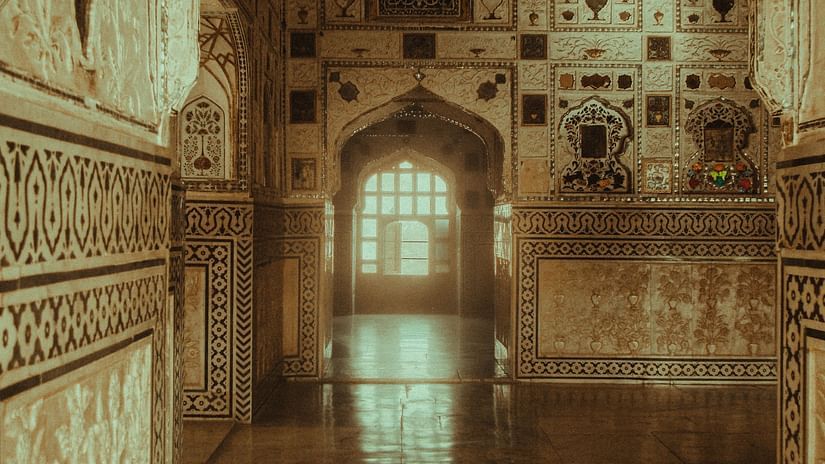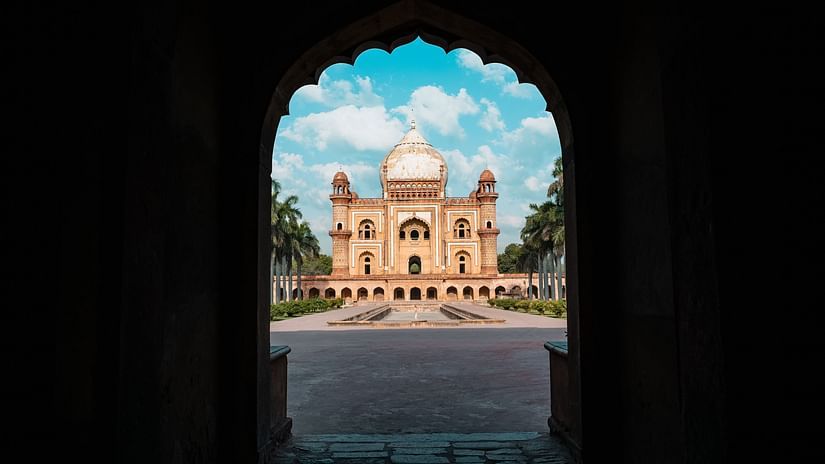- Waterfalls in Goa
- Ideal Places for a Short Trip near Delhi
- Hidden Gems in Rajasthan
- Delhi to Sariska National Park: Trip Guide
- Traveller’s Guide to Goa Carnival
- Weekend Trip from Gurgaon
- Trip to Rajasthan with Family
- Delhi to Rishikesh to Nainital
- Delhi to Patiala Tour Guide
- New Year Celebration Near Delhi NCR
- Christmas Celebration in Tijara Fort Palace, Alwar, Rajasthan
- Nainital in the Winter Season
- Sunburn Goa 2024
- Trip to Alwar
- Water Sports in South Goa
- New Year Eve Party in South Goa
- Moosi Maharani Ki Chhatri
- Siliserh Lake
- Must try dishes in Rajasthan
- Best Places to Visit around Jaipur
- Solo Trip to Rajasthan
- Sariska National Park
- Places to visit in Rajasthan in December
- Staycation Near Delhi NCR
- Best Holiday Destinations Near Delhi
- Best Resorts Near Delhi for Family
- Vacations near Delhi
- Goa in Summer Season
- Naina Devi Temple, Nainital
- Best Time to Visit Rishikesh
- Tijara Ji Jain Temple
- Must Visit Historical Sites in South Goa
- Local Food in South Goa
- Traditional Festivals of Rajasthan
- Naina Peak Trek
- Fatehpur Shekhawati
- Activities in Nainital
- Local Food in Tranquebar
- Alwar Famous Food
- Offbeat Places in Nainital
- Offbeat Places in South Goa
- Offbeat Places in Rajasthan
- History of Tharangambadi
- Best time to visit Nainital
- Best Beaches in South Goa
- History of Shekhawati
- The Best Beaches in Tamil Nadu
- Places to Visit in Shekhawati
- New Year Celebration in Nainital
- Weekend Trip in Tamil Nadu
- New Year in Goa
- Nainital Itinerary for 2 Days
- The Best Places to Visit in Patiala
- Places to Visit in Tharangambadi
- South Goa Itinerary for 3 Days
- Tourist Attractions in Alwar
- Kochi 2-day Itinerary
- Things to Do in South Goa
- Places to Visit in Gwalior
- Weekend Getaway from Jaipur
- Best Places to Visit in Alwar
- Best Time to Visit Alwar
- Places to Visit in Alwar
- Best Time to Visit Gwalior
- Literary Connections of Ramgarh: Tagore and Mahadevi Verma
- Things to Do in Alwar in Monsoon
- Exploring the Festivals of Alwar
- Everything You Need to Know About Betul, Goa
- Things to Do in Kochi at Night
- Uttarakhand Itinerary for 7 Days
- Best Time to Visit Kochi
- Visit The Mesmerising Hill Stations in South India
- The Best Places to Visit Near Nainital
- A Weekend Getaway to Ramgarh: Travel Guide
- Explore The Magical Cochin Backwaters
- The Majestic Coonoor to Ooty Toy Train
- The Best Vacation Spots Near Chennai
- Must Visit Places in Kerala
- Destination Wedding in Rajasthan
- Exploring the Orchards in Ramgarh
- Explore the Museums of Tranquebar
- Masilamani Nathar Temple, Tharangambadi
- Things to Do in Kesroli
- Best Places to Visit in South India in January
- Exploring the Tamil Nadu Coastline
- Places to Visit in Gwalior at Night
- Places to visit in Rajasthan in Winter
- Unexplored Treasures of Uttarakhand
- A Visit to Mangalavanam Bird Sanctuary
- Royal Rajasthani Weddings
- Rajasthan Itinerary for 7 days
- Into the Wilderness of Rajasthan’s National Parks
- Explore the Historic Town of Neemrana, Rajasthan
- Enchanting Lakes of Nainital
- A Dive Into the Royal History of Alwar
- Trails and Treks near Nainital
- The Seven Most Frequented Places in Rishikesh
- Kochi: The Queen of the Arabian Sea
- Fairy Queen: The Oldest Working Steam Locomotive
- Forts and Palaces of Alwar
- The Unparalleled Art and Culture of Madhya Pradesh
- Best Beaches To Visit in Cochin
- A Spiritual Journey to the Temples in Alwar
- Handicrafts of Rajasthan
- Places to Eat Street Food in Gwalior
- Wellness Retreats in Rishikesh
- The Danish History of Tranquebar
- Of Mystical Spaces and Hidden Treasures
- Rehabilitating Our Roots in Ruins... A Meet with Mr Aman Nath
- Our Annual Getaway to the Ramgarh Bungalows
- Experience Gwalior The Royal Way With Deo Bagh
- Living it up at a 14th Century Fort
- The Best of Both Worlds - Delhi and Jaipur
- Alwar City - Attractions
- Gwalior - The Tourist Capital
- Drivable Weekend Getaway from Delhi-NCR
- Hiking and Trekking Trails near Jaipur
- Safe Weekend Getaway from Delhi
- Trek Trails from Rishikesh
- Things to do Around Tranquebar Fort
- Majestic Temples of Gwalior
- Tea Plantations of Coonoor
- Fort Stay in Alwar
- Best Places to Visit in Tamil Nadu
- Shopping in Gwalior
- The Chinese Fishing Nets of Kochi
- Exotic Swimming Experiences near Delhi
- Ketty Valley, The Second Largest Gorge in the World
Gwalior, the historical heart of Madhya Pradesh, is a city where the past resonates in every corner, where architectural marvels and rich heritage await your exploration. It's a destination that beckons travellers with a promise of unforgettable experiences. In this comprehensive guide, we will lead you through the best places to visit in Gwalior and the reasons why you should make this city your next travel destination.
Gwalior Fort
Our journey commences with the iconic Gwalior Fort, a true gem among the best places to visit in Gwalior. Perched majestically on a hilltop overlooking the city of Gwalior, this fort offers awe-inspiring panoramic views of the surrounding landscape. This fort has been built and rebuilt over many centuries by different rulers, the earliest parts of the fort date back to the 6th century AD, a testament to its enduring significance in India's history. Throughout the ages, Gwalior Fort has witnessed the rise and fall of dynasties, passing from the hands of the Gurjara-Pratiharas to the Tomar Rajputs, and later into the dominion of the mighty Mughals. Finally, the Scindias, one of the most prominent Maratha families, held sway over this historic site. The fort is a treasure trove of palaces, temples and other historical buildings, each echoing the whispers of centuries gone by.


Jai Vilas Palace
A short journey from the fort leads you to Jai Vilas Palace, a beautiful example of Rajput architecture. This magnificent palace was constructed during the reign of Maharaja Jayaji Rao Scindia in the 19th century, now gracefully transformed into a museum, offering visitors a chance to step back in time and immerse themselves in the grandeur of royal India. The exterior of the palace is decorated with intricate carvings and the interior of the palace is lavishly decorated with marble, gold and paintings. The palace boasts a series of rooms, The Durbar Hall, where the Scindias once held court, The Throne Room, where the Scindias sat on their thrones and The Ballroom, where the Scindias held grand balls and receptions. The palace also has a number of other features, including a library, a museum and a theatre making Jai Vilas Palace a must-visit for anyone interested in Indian history and culture.
Sasbahu Temple
Exploring Gwalior's historical and architectural wonders wouldn't be complete without a visit to Sas Bahu Temple. This twin temple, dating back to the 11th century, is dedicated to the Hindu goddesses Durga and Lakshmi. Made from red sandstone and adorned with intricate carvings, the larger temple, Sas Mandir is dedicated to Durga, while the smaller one, Bahu Mandir is dedicated to Lakshmi. Representing a fine example of early Hindu temple architecture, the temple's carvings narrate tales from Hindu mythology, such as Ramayana and Mahabharata.


Teli Ka Mandir
Teli Ka Mandir, also known as Telika Temple, stands within the Gwalior Fort as a notable Hindu temple. It is dedicated to Shiva, Vishnu and the Matrikas, with its construction believed to date back to the early 8th or 9th century CE. It departs from the typical Hindu temple design, featuring a rectangular sanctum instead of the more common square layout. The name "Teli Ka Mandir" originates from the Teli community, traditionally oil-pressers. Local legend attributes the temple's construction to this community, although historical evidence supporting this claim is absent. Nevertheless, the temple serves as a fine example of early Hindu temple architecture. Made from sandstone, the temple's exterior boasts intricate carvings depicting scenes from Hindu mythology, including episodes from the Ramayana and the Mahabharata. This temple is one of the best tourist places in Gwalior and for the right reasons.
Tomb of Tansen
The Tomb of Tansen, located in Gwalior, is a mausoleum dedicated to the renowned Indian musician Tansen, who served as one of the nine esteemed individuals in the court of Mughal emperor Akbar. This 16th-century tomb was constructed by Tansen's son, Bilas Khan, and stands as a simple yet graceful structure that aptly honours Tansen's lasting legacy. Comprising two sections, the tomb includes a main chamber, where Tansen's remains are laid to rest. This chamber is a modest, square room featuring a domed ceiling. Adjacent to it is the antechamber, a larger space where visitors can offer their respects to the musical maestro. The tomb's adornments include intricate carvings of flowers, birds and animals while the walls of the main chamber bear inscriptions of verses from the Quran. This historical site attracts tourists interested in Indian history and culture, providing a tranquil space to pay homage to Tansen's profound contributions to the world of music.

To make the most of your visit to Gwalior, we recommend staying at Deo Bagh - 17th Century, Gwalior, where heritage meets modern comfort. We offer the perfect blend of luxury and history. Located conveniently near the best places to visit in Gwalior, you'll find yourself immersed in the city's charm. Our heritage hotel offers a range of well-appointed rooms, each facing a Nau Bagh. Our hotel's warm and attentive staff are dedicated to ensuring your stay is nothing short of extraordinary. Read our blog to learn about the best time to visit Gwalior.